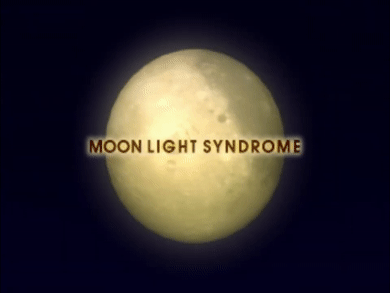Program: Hoshino, Yuuki | Sound: Niikura, Kouji | Screenplay: Suda, Goichi


Mika is waiting for Arisa at Hinashiro-dai station. The train for Shimokita suffers a delay due to an accident at its station, to which Mika wonders if it’s related to another suicide. Arisa suddenly arrives and hurries Mika to get on the train before it departs; Mika attempts to tell her that the train has been delayed, but she is cut off by the announcement of its immediate departure.
Sitting on the train, the two girls can engage in three different conversations: One of them again veers into the territory of Mika’s maturity and how she embodies the stereotypical high-school girl due to her obsessions with tv-mandated trends and gossip. (Of course we know that Mika actually resents the persona she has built around herself, but she’s also having trouble breaking out of it.)
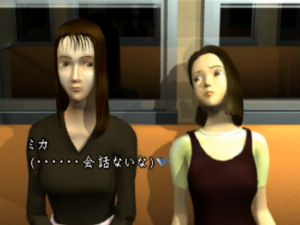
Arisa suggests that she should try to be more like Yukari, and that if she doesn’t break out of her character she’s gonna face difficulties as she moves on with her life. For example, she’d need to develop her own personality more in order to stand out in a context in which there is no “main crowd” to blend herself in, such as University.
Mika does recognize that her behavior is wrong, to which Arisa compliments her for starting to think of herself as an individual rather than letting the group think for her. Arisa claims that a “weapon” is needed to figure one self’s out, but it’s not a “weapon” that can be given by anyone else, not her, Yukari or even Chisato. What I think she’s getting at is that Mika needs to “forge” herself in order to become her own individual and truly move into adulthood; this idea of an internal/psychological weapon is also brought up in エピローグ EPILOGUE, and is what ultimately allows Ryo to defeat Mithra.
In the second of the three possible conversations, Mika complains at Arisa for being late, which she justifies by explaining her extreme grooming standards, such as spending two hours a day combing her hair.
The third conversation just has the two girls discuss TV shows and videogames. Surprisingly, Mika claims not to be a gamer at all, while in other chapters she often referred to herself playing RPGs. Was that another lie she told her peers in order to seem trendy?
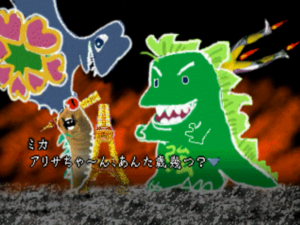
Regardless, after any of the three conversations, Arisa will eventually describe her dream from the previous night. It’s a complex and seemingly random story in which several tokusatsu/kaiju characters (Godzilla, Gyaos, Mothra, Gamera etc.) get into a fight with Ultraman Tiga, who can split into three. Ultimately, the world is destroyed, which is when the story is revealed as having been happening inside a child’s head, just playing with his figurines in the sand pit. (The child’s name is Daigo, which happens to be the name of Ultraman Tiga’s human alter-ego, Daigo Madoka.)
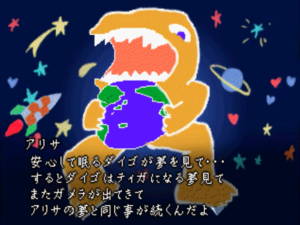
As the boy is trapped in a floating zoo, he is eventually killed by Doraemon with a solar ray in retaliation for Nobita’s murder.
At the end of the dream, Daigo eats the whole world and falls asleep, dreaming of being Ultraman Tiga, and the cycle begins anew as the kaijus attack the world once more.
Trying to explain her own dream, Arisa says that there is one glaring contradiction: The world exists inside Daigo’s dream, but as he becomes Ultraman Tiga, Daigo is no longer present in the dream. The story revolves around Daigo, yet nothing about him makes sense. Arisa interprets this as the idea that rather than a god manipulating the world, it is people steeped in contradictions who cause harm to others; However, without said people, the world wouldn’t even exist. (That is to say that Daigo Madoka is the one causing the end of the world in his dream cycle, but without his dreams, the world wouldn’t be.)

This may seem pretty random, and on some level it may only make sense to Arisa herself (much like dream logic is sensible to the eyes of the dreamer) it is Jolovey’s and my opinion that this is likely foreshadowing for エピローグ EPILOGUE, where it is revealed that the events of the game (and the town of Hinashiro itself) revolve around Ryo, which in this tale would be the man steeped in contradiction.
Suda has said as much in the In-depth Guide Q&A:
Could the story of Moonlight Syndrome be considered to have taken place within Ryo’s inner universe? Or do the inexplicable events that occur during the story actually occur in the real world?
What would happen if the phenomenon of mental revolution that Ryo undergoes, triggered by the death of Kyoko, happened not just to him but to the whole of Hinashiro? The headmaster, Kimika Takahashi, the people at the club… If all of the people scattered across town, too many to depict, were to simultaneously undergo this internal revolution…
I think of it as a realistic story with this exaggerated to an extreme.
Ryo definitely does exist within Hinashiro, and he experiences a realistic story up until Dowaku. There is no definite explanation for the epilogue. You could say that all of the characters in the story are walking along by themselves, and so at one point I had to rewrite the epilogue due to the circumstances of their journeys. The events are completely different.
Source
Ryo’s desire to protect Mika as a substitute for his sister is what makes Mithra and Yayoi get involved with her in the first place; therefore, Ryo’s existence is what causes Mika’s suffering and the endless twisting of Hinashiro’s reality. At the same time though, Ryo’s contract is the only reason why Mika is alive to experience the world. Mika’s world exists because of Ryo, exists in “Ryo’s dream”, so both her suffering and her joy happen because of him.
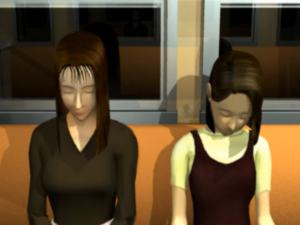
In the conversation that follows, Arisa and Mika realize that they don’t know where they’re going and that each thought that the other had invited them; Arisa suddenly passes out and right as Mika falls asleep next to her, Mithra makes his appearance.
Mika, as we established, doesn’t remember him, so she greets him as she would a random little boy. She does however grow suspicious as soon as Mithra reveals, once more, that he has been watching her all along and is aware of her growing pains. Her attempts at waking Arisa are fruitless: Mithra is in control of the situation, and in order to show Mika how her expectations of people are misguided (in other words, that she expects society to live her life for her, when in reality people are absorbed by their own problems) she grants her the power of sensing people’s inner thoughts, much like she did in 電破 DENPOW.
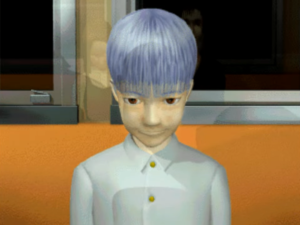
She immediately tests this power on a nearby salary man, whose inner heart shares his frustrations about the self-defeating, exhausting nature of his job, and how distant it’s making him from his family. (Again, the concept of “salary man” did not exist in Japan before American/western capitalist colonization, hence why they refer to it with an English word.)
Mithra disappears, telling Mika to enjoy herself with her newly acquired power. She then progresses through the train, sensing the minds of different people along the way.
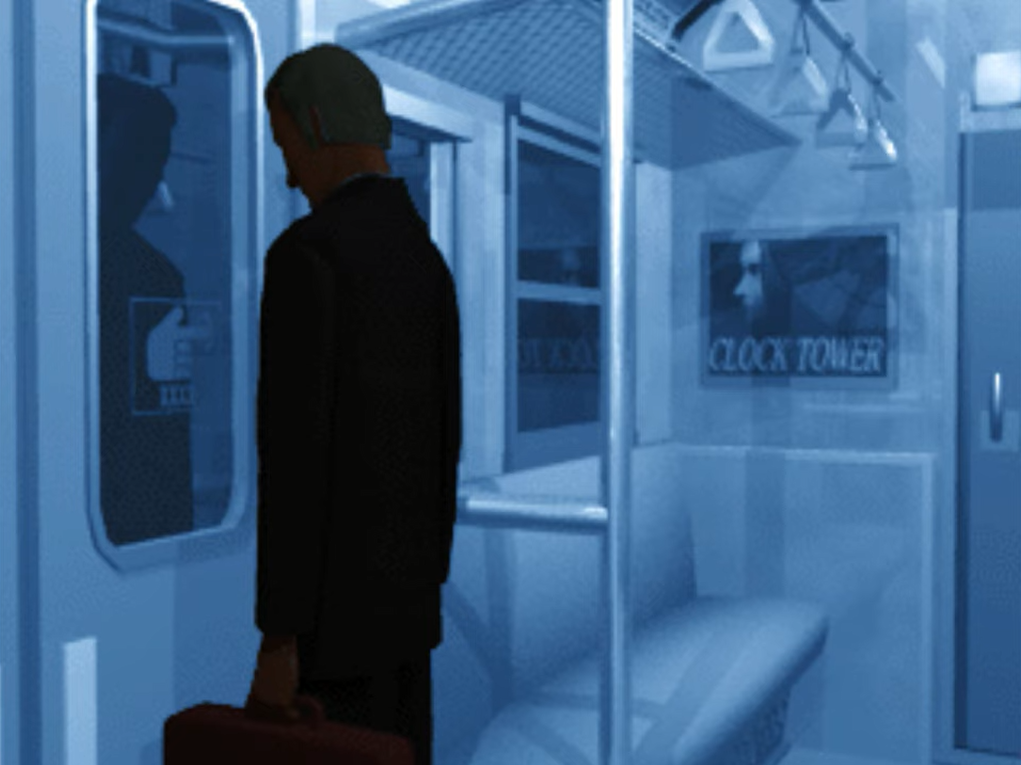
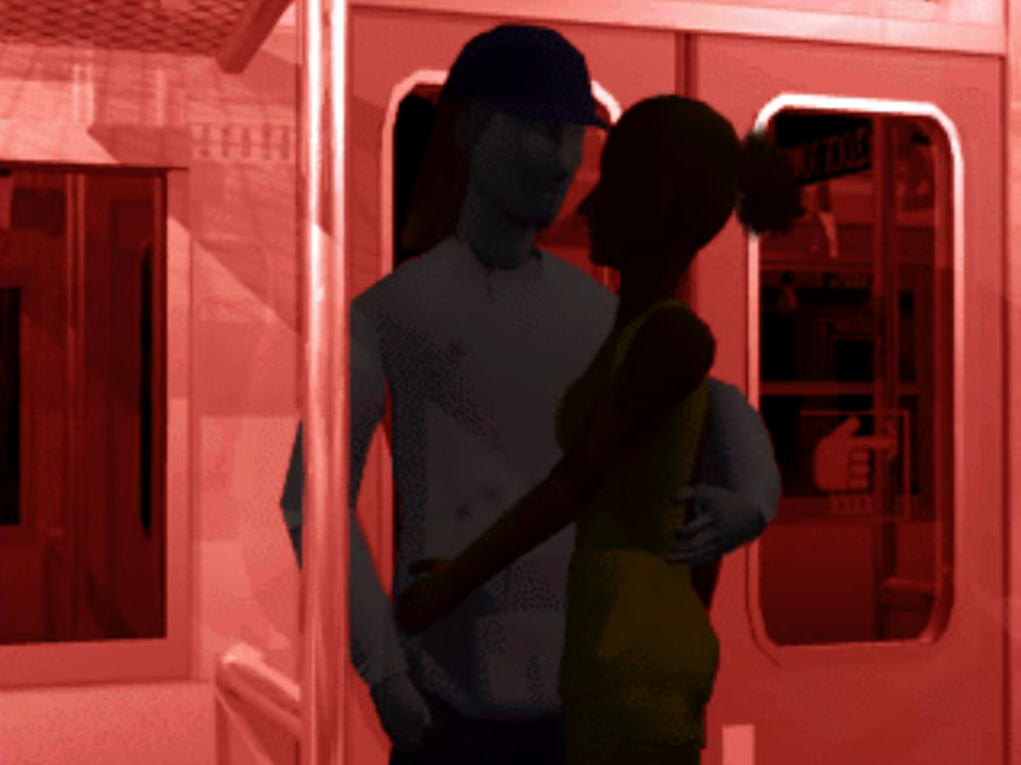

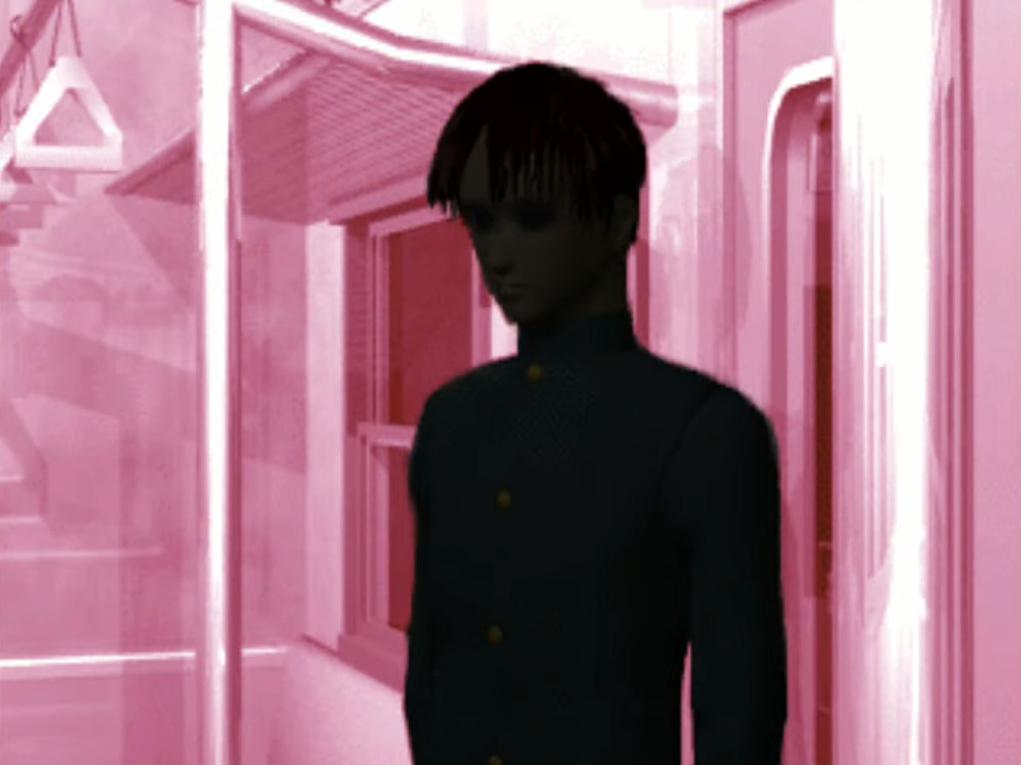
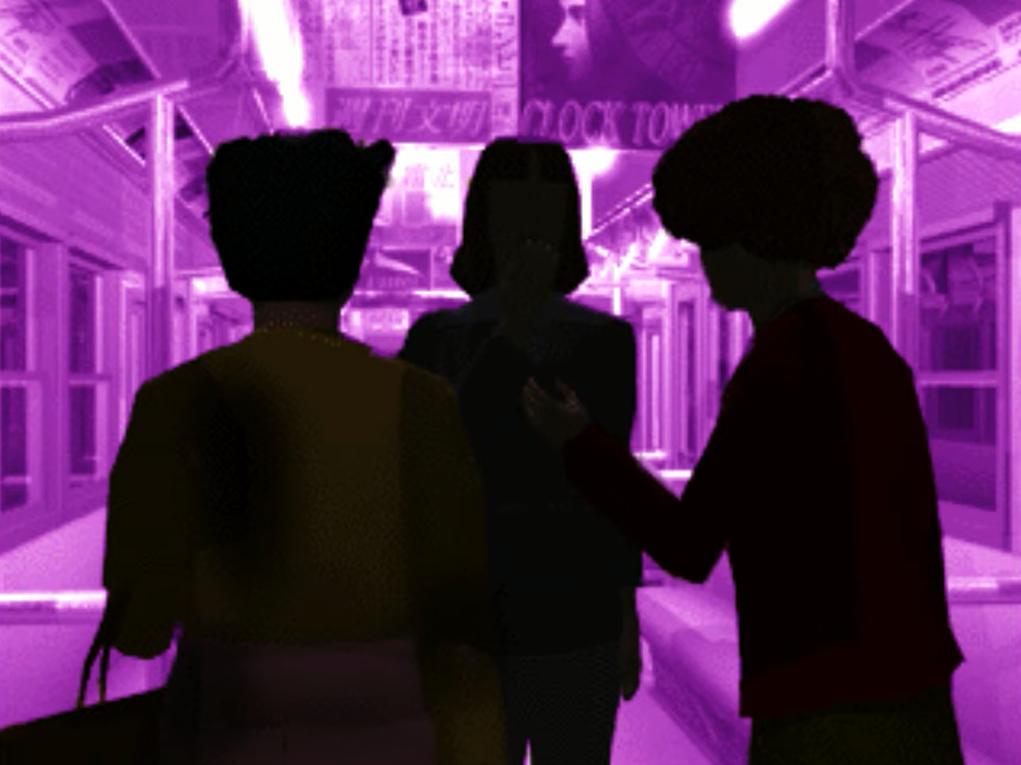
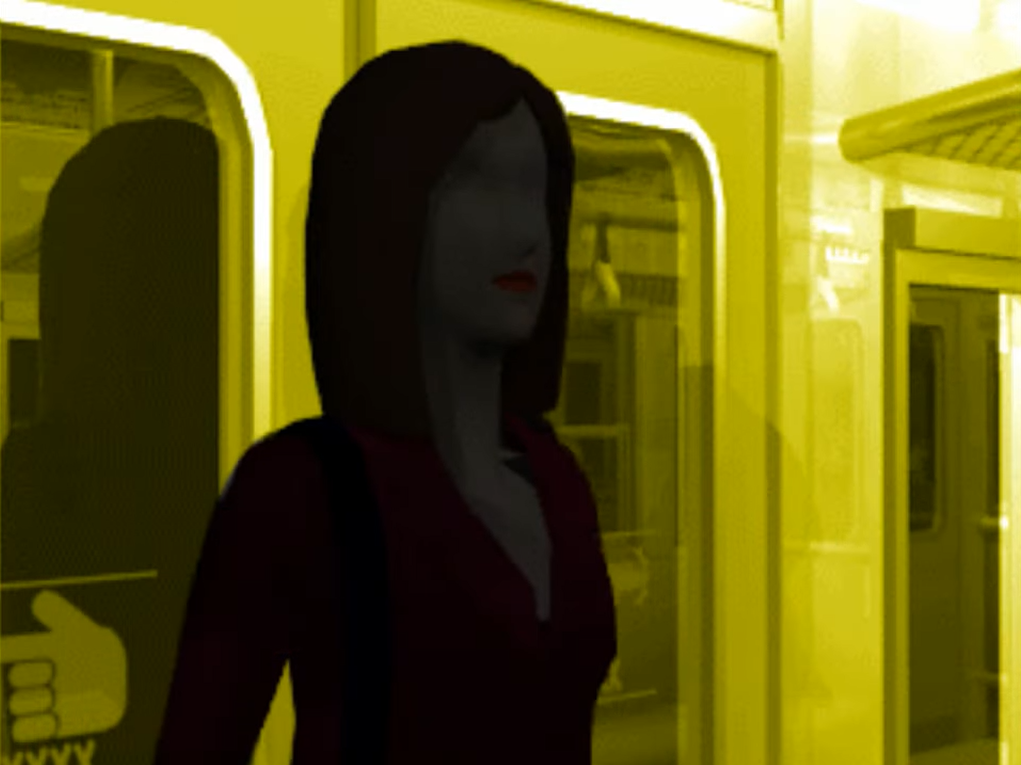
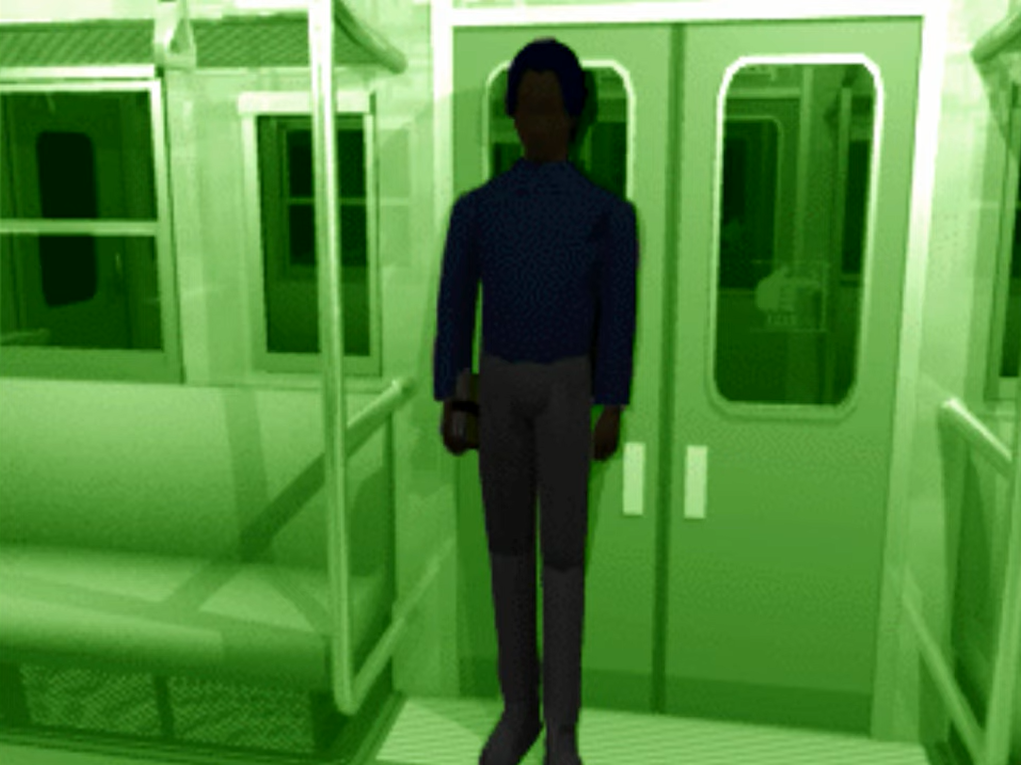
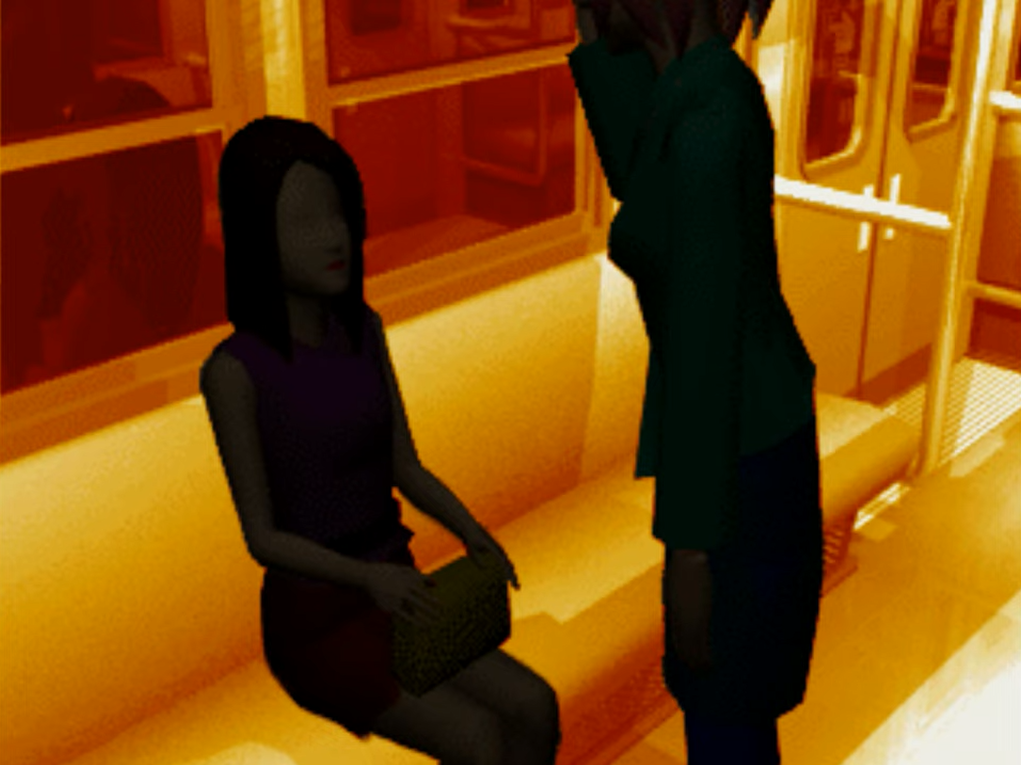
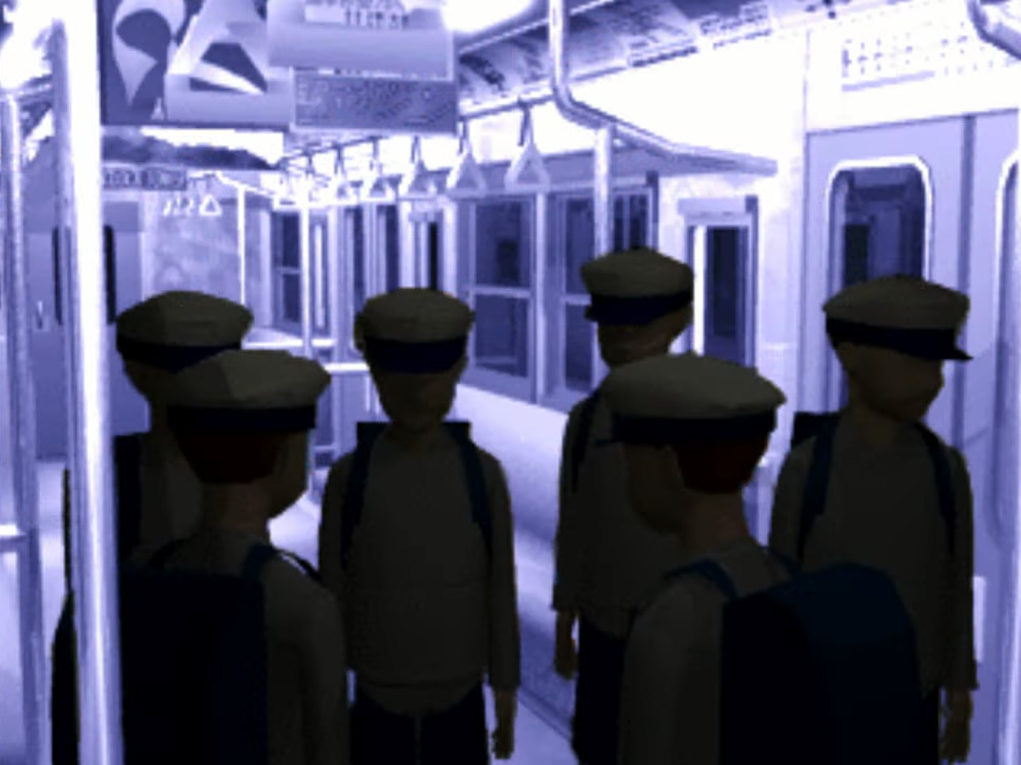
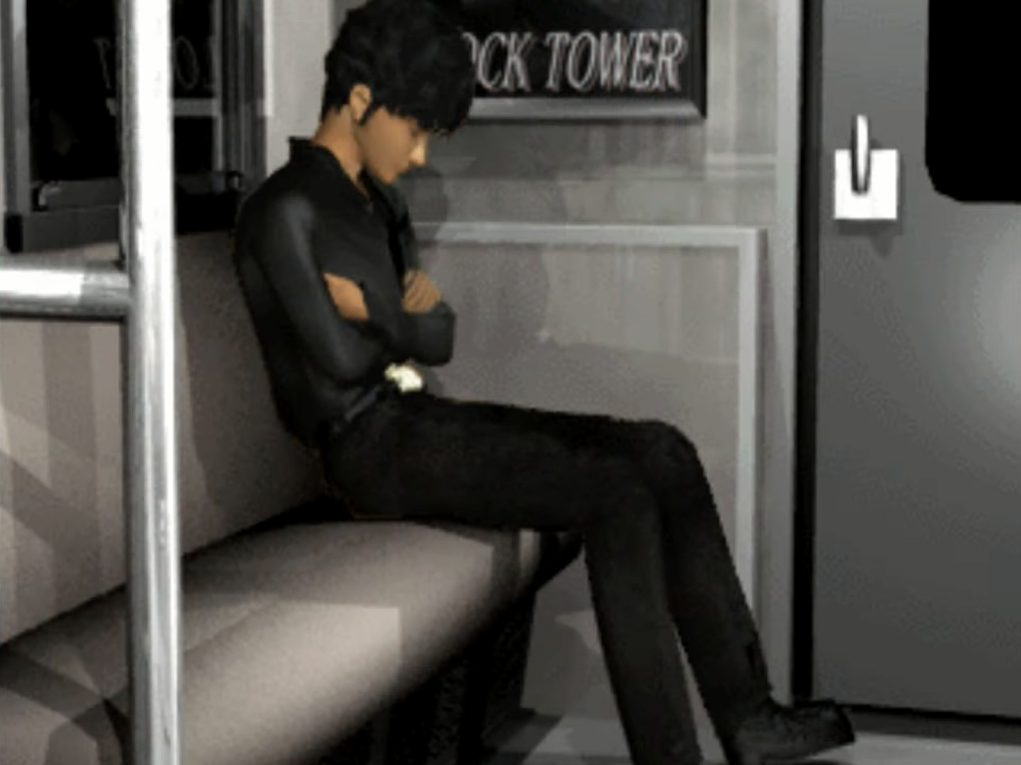

Beyond the train itself Mika is confronted by Mithra in front of a blinding white light. He explains the point of his little lesson, to disillusion Mika from the worth of humanity. Mika posits that it must be a coincidence, that everyone present on the train just so happened to be harboring horrible thoughts, but Mithra responds that’s just the unchanging nature of humanity. It always has and always will be comprised of atomized individuals looking out for themselves, unable to build a household, and he’s going to show her the true depth of humanity’s sin, “a world of insanity draped in superficiality and hypocrisy”.
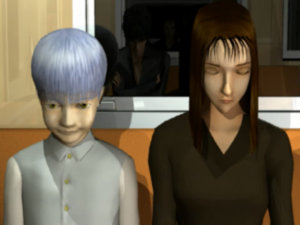
Back in the train, Mithra shows an unconscious Mika to a now awakened Ryo. He questions the boy about his motives for bringing the two together, to which Mithra responds that he has none other than to entertain himself with the scenario he has created. To Ryo pointing out that he clearly has a problem with the two of them, Mithra responds that Mika is a substitute, and that “what was promised has changed.”
What he’s referring to here is the particulars of his contract with Ryo. We will find out in 陰約 INYAKU that Ryo, in order to save Mika’s life, a stranger to him who just so happened to resemble his sister Kyoko, he had to give Mithra the first girl he held in his arms (i.e. the one he would fall in love with. Which is, of course, Mika.)
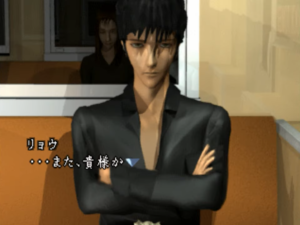
It follows that the reason why Mithra torments Mika is not because of any specific issue with her (in fact, she is not even able to remember his pranks, as opposed to Ryo) but it’s to set up the dramatic irony of having Ryo brand Mika as a sacrifice (by falling for her) as the price for Mika’s own life.
If Mithra didn’t actually torment Mika, Ryo could just go on living with his life, walking on a separate path. By tormenting her Mithra is forcing Ryo to act, but by acting, he’d inevitably awaken to her feelings to Mika, which is what gives Mithra permission to take possession of her.
This explains the dream imagery from before: Daigo (Ryo) grants the world (Mika) life by dreaming of it (taking Mithra’s contract). However, the world (Mika) is attacked by monsters (Mithra) which forces Daigo (Ryo) into action by transforming into Ultraman Tiga. His actions (becoming Mika’s protector), however, lead to the end of the world (Mika being sacrificed to Mithra). Doraemon being a merciless killer, driven mad by the loss of his friend Nobita at the hands of Daigo, needs no further explanation.
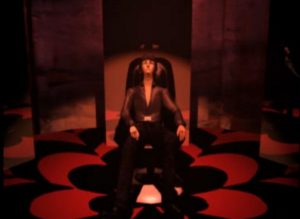
At the same time, Mithra’s resolve to break Mika’s mind seems to be related to the fact that spirits such as him or Yayoi cannot arbitraily “take” a soul, it must either be acquired as a result of a contract (which was, for example, what was going to happen to Riru in 浮誘 FUYOU, and what happens to Sumio in 夢題 MOWDEI and to the headmaster in 慟悪 DOWAKU) or be given to them in a mind-broken state (which is what Yayoi did to Ryo in 夢題 MOWDEI, by showing him the head of Kyoko before “absorbing his soul.”)
This opens up a new question: If Yayoi has already taken possession of Ryo’s soul (whom I will remind you was “Sumio’s substitute”) then how come he is left free to roam around at his own volition?
Ryo tries to convince Mithra that he does not care about Mika at all in order to dissuade him, but Mithra sees right through him and knows that he can’t help feeling something for the woman who is the spitting image of his deceased sister. He insists that Ryo must take responsibility for Mika’s soul, to which he responds that he has no idea how he could possibly protect her from his tricks.

Mithra congratulates himself on setting up the whole scenario (again, as we were shown in 浮誘 FUYOU, he exists “outside of the game”) by influencing events so that Ryo would have to be faced with this impossible choice. If he gives up on Mika, she’ll be taken, willingly giving her soul to Mithra. If he decides to protect her, she will be taken, as price for Ryo’s own contract.
He then puts Ryo in front of his final challenge on whether or not he’ll be able to “forgive (accept) all” from Mika: Much like he showed Mika the inner hearts of others, he shows Ryo the inner heart of Mika.

Ryo has already been tested in 変嫉 HENSHITSU‘s dream sequence on whether or not he would forgive Mika “everything” by being shown her own insecurities about making up stories, being superficial, and even her committing heinous acts. However, what he is shown now is Mika’s most sincere desire, her sexual longing for Sumio.
As we have established, Ryo has a love-hate relationship with Sumio where he was constantly pushed by him into being more decisive and manly. That is to say that his relationship with Sumio stands at the core of his insecurity; as Sumio also took possession of his sister sexually, the thought of him also taking control of Mika, and not just that, but her being unable to reciprocate Ryo’s feelings due to her obsession with Sumio, is crushing to Ryo. We see Ryo broken, his eyes white, much like he was during 夢題 MOWDEI after being shown his sister’s severed head.
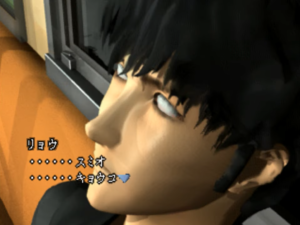
From his dialogue (him calling out for Kyoko and Sumio) we can infer that he is once again at “the edge of the world”, the most primitive place. There he witnesses Mika having relations with Sumio.
Mithra and Mika once again disappear. Mithra confronts her with a series of cryptic images which possibly represent the past sins of humanity.
These images flash very quickly, to the point where one has to pause a recording in order to see it clearly (which would have been particularly difficult to do in 1997). As such, they were probably chosen to evoke an abstract feeling rather than to have any literal meaning onto themselves.
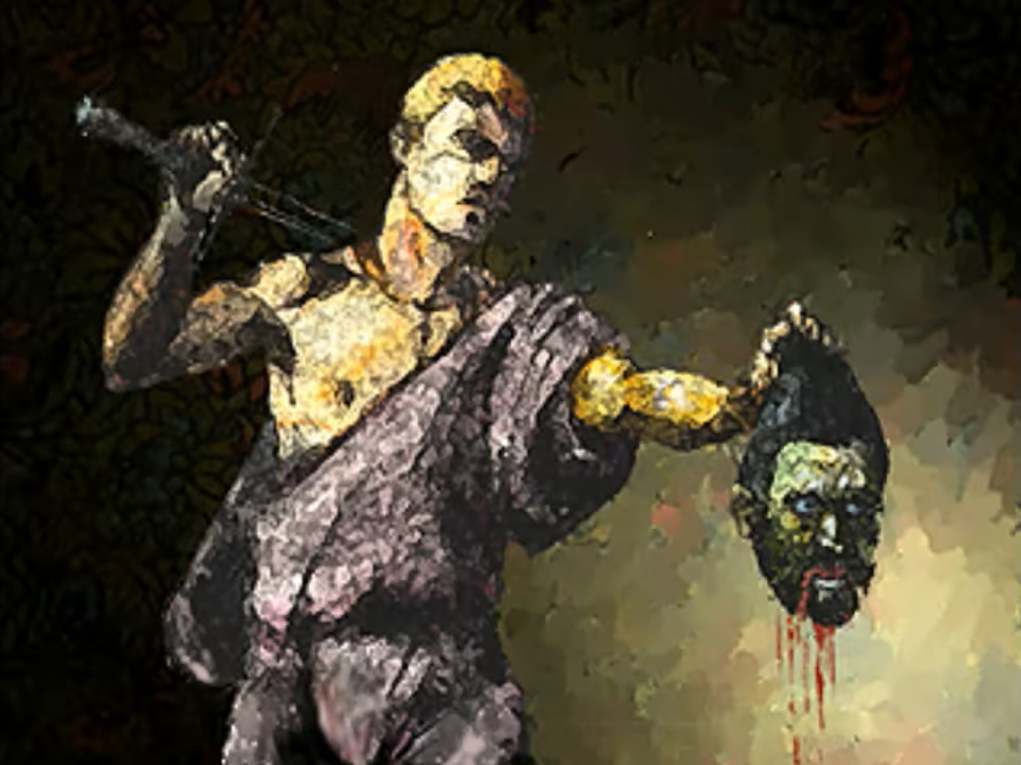
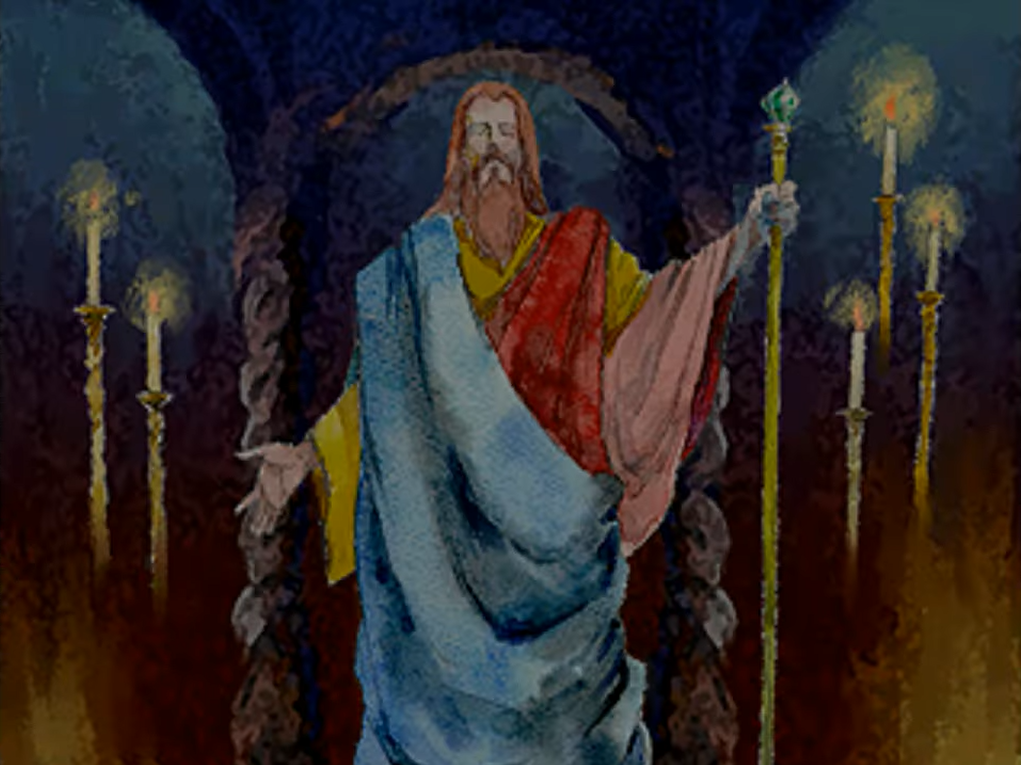
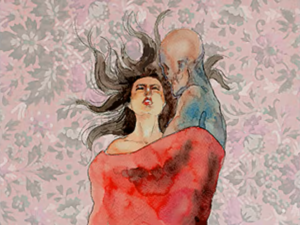
She is eventually shown an image of a woman having relations with a corpse (sex/reproduction and death being part of the same cycle, le petit mort and so on) which she somehow recognizes as herself having sex with Sumio. She is repulsed and embarrassed by the image; however, she justifies herself by saying that everyone does it, and thus it must be important to people. (Again, Mika is a conformist who just makes her decisions based on collective trends. Going so far as to give herself to a man who used her, just because having sex makes her belong in the group.)
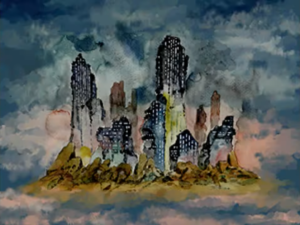
The next image is that of a post-apocalyptic ruin, which she initially recognizes as Hinashiro, before concluding that everywhere looks like that now. (Urbanization as death and the end of tradition and diversity between countries.) To which she wonders if that is also humanity’s sin, tying back to Yayoi’s comments in 浮誘 FUYOU about humanity’s role in ending the world.
Mika is exhausted, and Mithra once again proposes to take her away, presumably to Paradise (“the edge of the world”, a memory that becomes a place.) The player can choose to have Mika resist Mithra, but whichever the choice, Ryo will eventually step in to defend her, telling her that the kid she’s been talking to is a demon.
Mika, in a trance, responds that Mithra is a God who has come to save her soul.
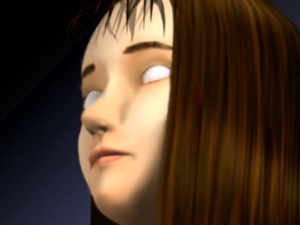
Ryo then ponders on why it has to be him, why he has to face impossible odds to save a woman he barely even knows, just as he is tormented by images of Mika and Sumio having sex.
However, the memory of Kyoko reassures him: if she gives him strength, if she allows him to, maybe there is something he can do to protect Mika.
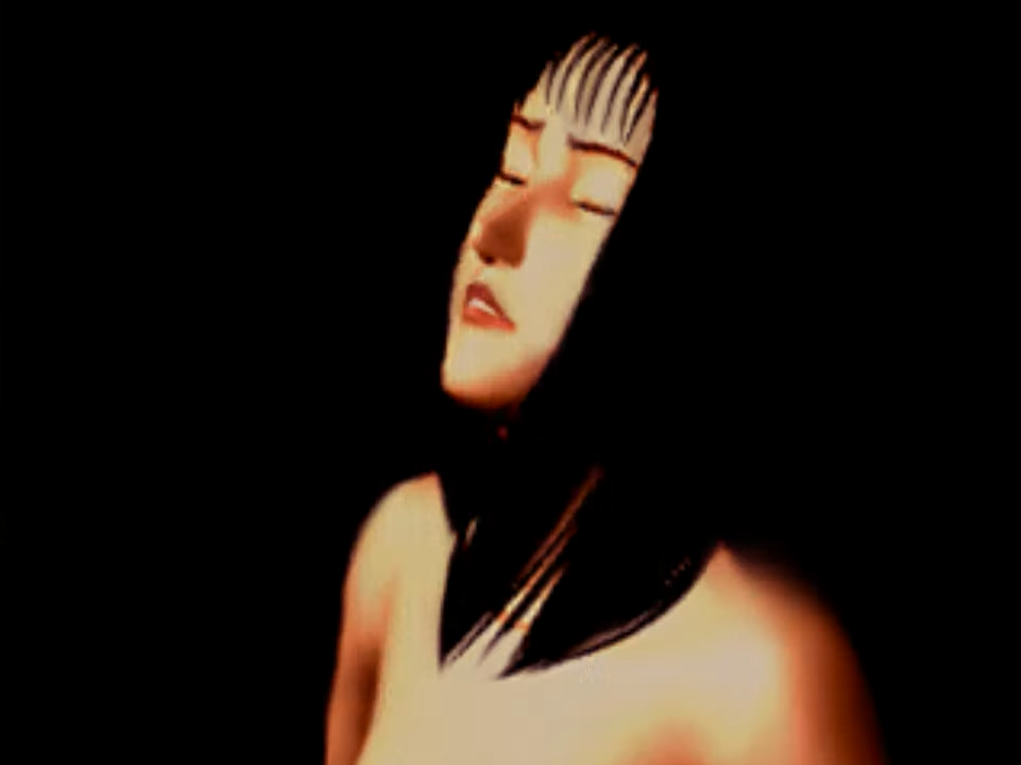


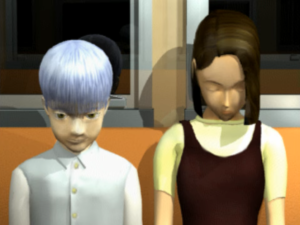
The scene then cuts to Mithra, sitting next to Arisa, occupying Mika’s space. He concludes, talking to the unconscious Arisa, that Ryo is not yet mature enough to take Mika for himself, and he regrets spending so much time trying to get them together. (Again, because by becoming intimate with Mika, Ryo would offer her up as a sacrifice.)
However, he hopes they’ll find solace in the peaceful place he sent them to (“the edge of the world”). After monologuing about his mysterious identity and how humans are not meant to know his true face, he bids Arisa farewell and she finally wakes up.
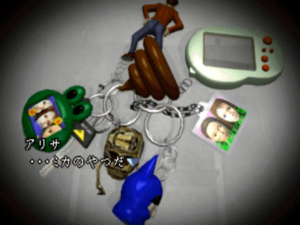
As she regains consciousness, she realizes Mika is missing, and that the train hasn’t actually moved from its station of origin. She eventually finds Mika’s belongings, and as the announcer voices the 100 minutes delay mentioned at the start, implying that the events of this chapter have taken place in Mithra’s own “dream world”. I suppose Mithra made sure that Arisa was present so that she could witness Mika’s disappearance and warn the others, since that’s what kickstarts the tragedy of 慟悪 DOWAKU.


